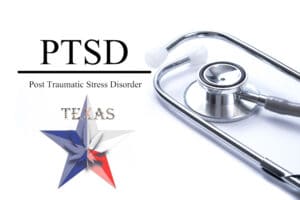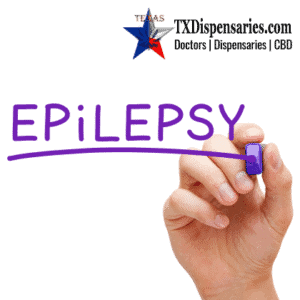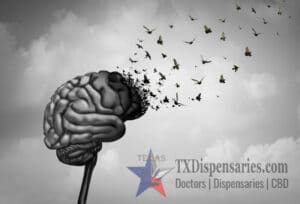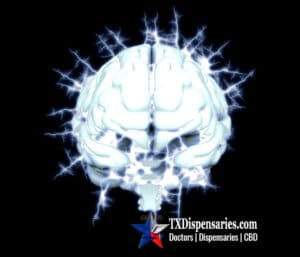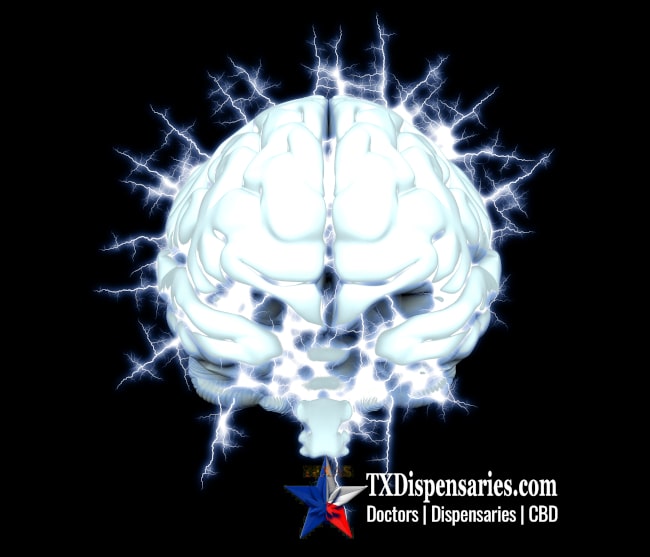
Treating Seizure Disorders With CBD or Medical Marijuana
-
Can medical marijuana or CBD be used to treat seizure disorders in Texas?
-
Is it effective at reducing the frequency and severity of seizures?
-
What are the characteristics of seizure disorders?
-
How can Texas residents with seizures find relief with Texas medical marijuana?
All Texas residents suffering from seizure disorders are now able to get medical grade cannabis based low THC high CBD in Texas — that is assuming they have the approval of their doctor. This is great news for families of Texas patients suffering from seizures, many of whom are finding that medical marijuana can, indeed, help them in many cases.
So, what are seizure disorders? And how does medical marijuana work to reduce the frequency and severity of seizures? Let’s get started.
What are seizure disorders?
The term “seizure disorder” refers to any chronic conditions of the brain that produces convulsions and seizures. Its victims may be young or old, as it has no preference for chronological age. In spite of the fact that they are common, seizure disorders are still largely misunderstood and unfairly stigmatized.
Seizures are caused by massive electrical discharges in the brain. These discharges cause convulsions that can be life-threatening. Episodes can range from interruptions in attention span or muscle spasms, to excruciating long-lasting convulsions. Some individuals suffering from epilepsy may have as few as one seizure a year, while others may have several on a daily basis.
In 2015, the CDC reported that approximately 1.2 percent of the U.S. population suffers from active seizures. This approximation includes 3 million adults and 400,000 children.
In studies compiled by the World Health Organization, it’s indicated that almost 80 percent of seizure patients reside in low to middle-income areas. Sadly, a whopping 75 percent of these individuals do not have access to viable treatments.
There exists an array of conditions that can result in chronic seizures. Some of these include:
- Brain infections (meningitis, encephalitis)
- Brain injury during labor or childbirth
- Brain tumors
- Congenital brain defects
- Drug abuse
- Epilepsy
- Fever
- Head injury
- Heart disease
- Heat intolerance
- Phenylketonuria (PKU)
- Stroke
Some of the inherent pitfalls and dangers of seizure disorders include:
- Dire psychological disorders, including anxiety and depression
- Risk of dying prematurely (three times higher than the average person)
- Constant threat of physical injury
Most people with epilepsy live in poorer regions, and the risk of dying from falls, drowning, burns, and massive convulsions is a common threat. These incidents, with the correct protocols, are entirely preventable.
Treating Seizures With Medical Marijuana
There are inexpensive daily protocols for epilepsy and other seizure disorders, some costing a mere $5 annually. Seventy percent of individuals worldwide who suffer from epilepsy could potentially obtain relief, but do not have access to treatment due to poor living conditions and extreme poverty. This “treatment gap” is prevalent in low to middle-income countries.
The reasons for this discrepancy are:
- Severe shortage of trained medical professionals
- Lack of anti-epileptic medications
- In some regions, even the cheapest epilepsy medicines may cost the average worker approximately 3-5 days wages.
- A dearth of information and awareness, cultural differences and beliefs, as well as social stigm
Studies On Medical Marijuana For Seizures
Treating seizures with marijuana has been studied in clinical trials since 1978. However, there is a severe lack of research on cannabis as a stand-alone protocol.
An early report from 1949 indicated that out of a handful of institutionalized children being treated with THC for epilepsy, one child remained seizure-free, and another showed a dramatic reduction in seizures.
In a clinical study from 1980 authors wrote:
“4 of the 8 CBD subjects remained almost free of convulsive crises throughout the experiment and 3 other patients demonstrated partial improvement in their clinical condition. CBD was ineffective in 1 patient. The clinical condition of 7 placebo patients remained unchanged whereas the condition of 1 patient clearly improved.”
In one experiment, 670 epilepsy patients were given either CBD extracts or CBD isolates for a period of 6 months to determine the effectiveness, side effects, and most effective dosages of CBD. All of the participants, prior to the successful CBD treatment, were known to be medication resistant and had shown no relief with traditional treatments.
Scientists thoroughly analyzed the differences in the effects of the extracts and isolates. Their findings indicated that seventy-one percent of the subjects who were administered the CBD extracts significantly reduced the frequency of seizures. Those given the CBD isolates showed a forty-six percent reduction.
CBD is known to be well-tolerated and non-toxic in most patients. However, the lack of studies makes it challenging for mainstream medicine to come to viable conclusions in regard to cannabis and the treatment of seizure disorders. More testing and quantified studies will be needed.
Cannabis Strains And Delivery Methods Available In Texas For Treating Seizures
In keeping with state regulations, all cannabis products sold from Texas dispensaries must contain less than one-half-percent THC and a minimum of 10 percent CBD. These high CBD and low THC blends are thought to be more effective than hemp-derived CBD oil containing no THC which is available over the counter.
Texas patients should talk to a local medical marijuana doctor regarding their condition.
Patients also have options for ingesting extracts of high-CBD, low-THC cannabis strains. Specific strains are not prevalent yet as the forms are very limited. Common delivery methods include smoking, beverages, powders, tinctures, vaping, edibles, capsules, pills, and liquids. Some of these delivery methods work better for certain patients than others, but the most common treatment are oral solutions of cannabis oils.
How To Get Started In Texas For Medical Marijuana
Patients suffering from seizure disorders will first need to contact a Texas-certified medical marijuana doctor. An appointment can be set up by phone to determine if the patient has a qualifying condition. This will be followed up by an in-person or online telemedicine evaluation.
Once the health care provider’s approval has been given to the patient, the name will be entered into the official state registry, and the patient can immediately purchase the cannabis products.

Sign Up for Medical Cannabis in TX
For potential medical marijuana patients we make it easy to connect with a recommending doctor online. You will also receive updates & news relative to medical marijuana in Texas. If you are interested, simply fill out the MMJ patient registration form to get started. Legal Residents Only.

MMJ Patient Registration Form

Sources and additional reading
- Medical marijuana helps stem 6-year-old’s seizures
- Marijuana: an effective antiepileptic treatment in partial epilepsy? A case report and review of the literature
- Cannabis and epilepsy: An ancient treatment returns to the fore
- Pharmacological and Therapeutic Properties of Cannabidiol for Epilepsy
- Chronic administration of cannabidiol to healthy volunteers and epileptic patients



